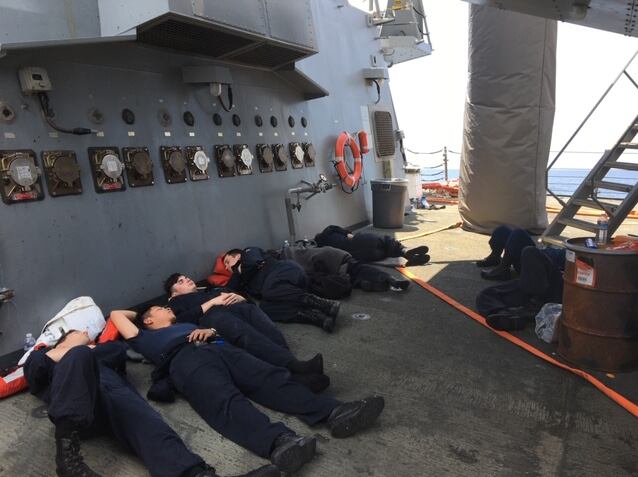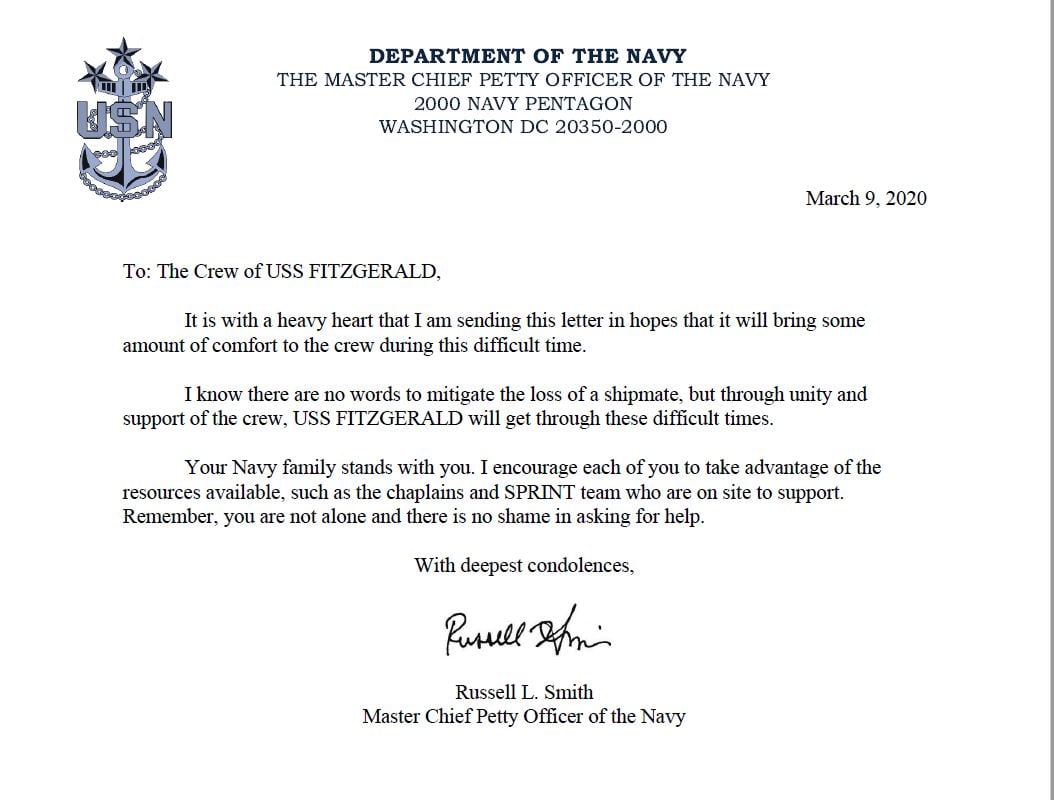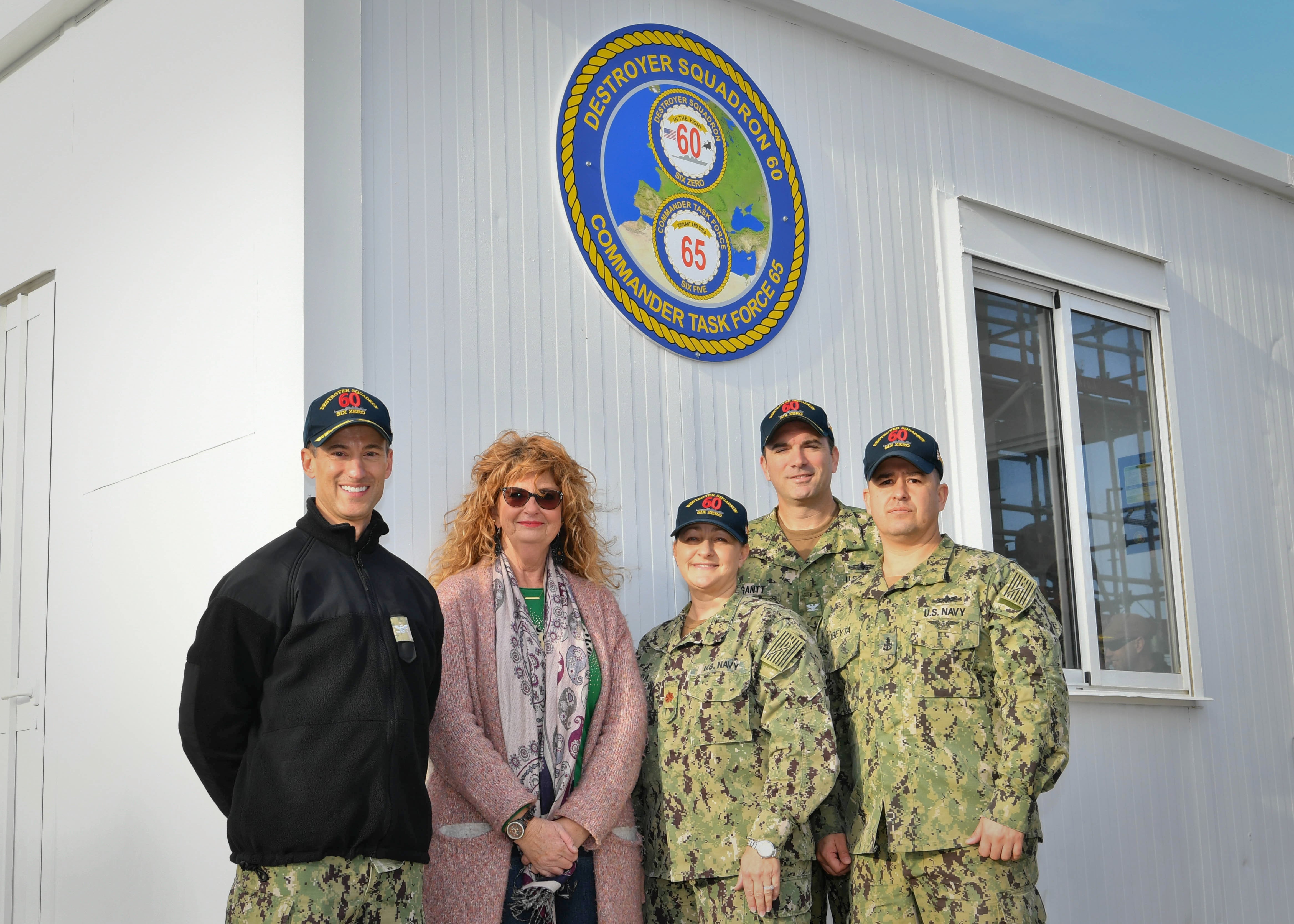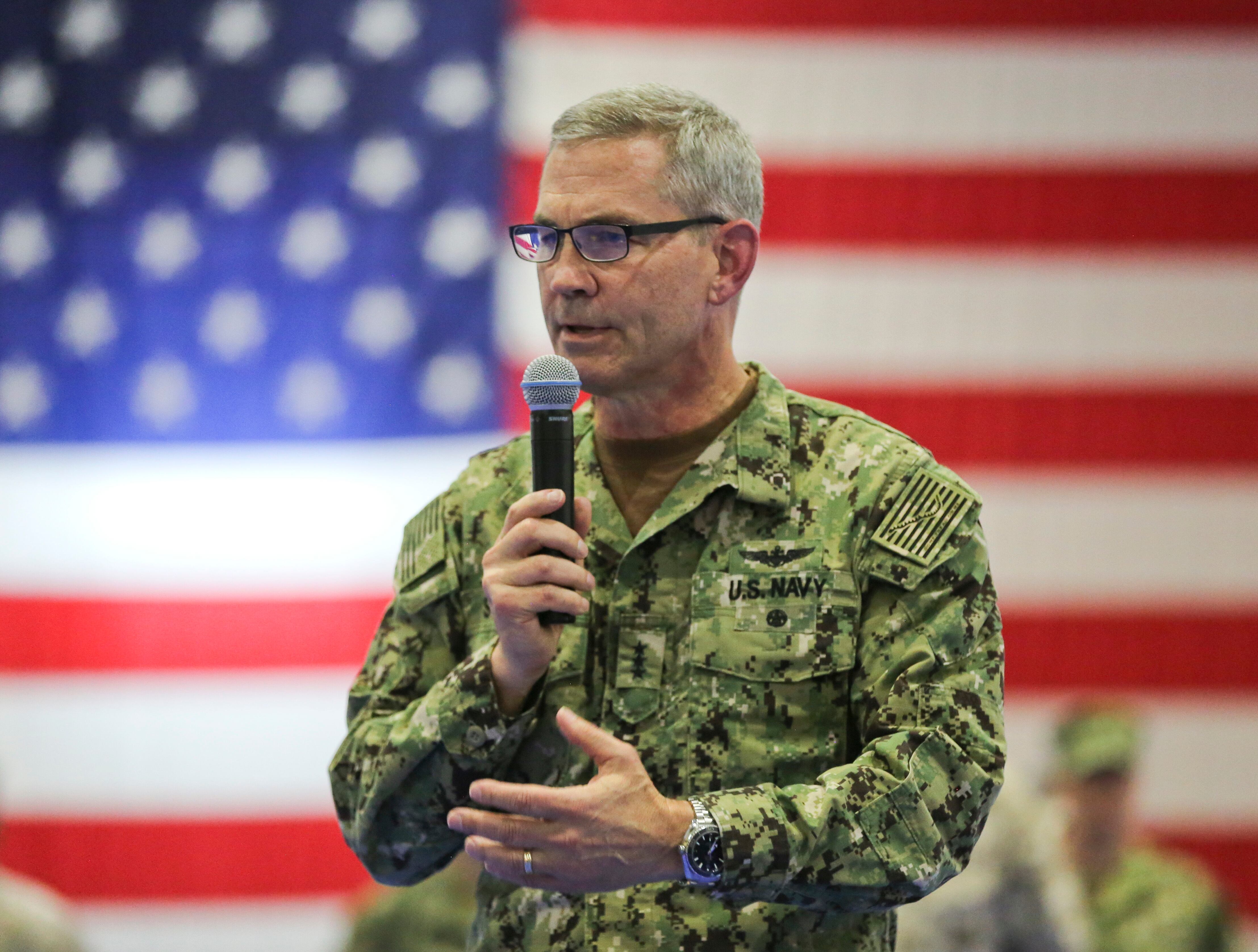Authorities in Mississippi are investigating whether a crew member who survived the warship Fitzgerald’s deadly 2017 collision off the coast of Japan took his own life March 4 in Pascagoula.
Fire Controlman 2nd Class Brandon Olson was one of 19 crew members still assigned to the guided-missile destroyer more than two years after the mishap.
The Fitz made a late 2017 journey from Yokosuka, Japan, to the Huntington Ingalls Industries shipyard in Pascagoula, where it has undergone $533 million in repairs. In early February, the vessel returned to the sea to test key systems.
Jackson County Coroner Bruce Lynd Jr. told Navy Times on Monday morning that the cause of Olson’s death has not been certified.
At the highest levels of the Navy, however, leaders are treating the model petty officer’s death tentatively as self-inflicted, a major concern to a sea service grappling with a suicide rate that more than doubled over the past 14 years.
“My condolences to the family of Petty Officer Brandon Olson and the crew of the USS Fitzgerald as they mourn the loss of a shipmate," said Master Chief Petty Officer of the Navy Russell Smith. "Our thoughts are with you during this difficult time, and your Navy family stands with you. I encourage each of you to take advantage of the resources available, such as the chaplains and SPRINT team who are on site to support. Remember that you are not alone and there is no shame in asking for help.”
Smith told Navy Times that he visited Fitzgerald’s crew on Feb. 28 during a trip to Pascagoula with Chief of Naval Operations Adm. Michael Gilday and later learned of Olson’s death by email.
According to a Navy biography, Olson enlisted on Sept. 24, 2015 out of California. He was assigned to the Fitzgerald on April 27, 2017, just months before the mishap that killed seven shipmates.
A family statement released to Navy Times remembered Brandon as a bright young man, “quirky, loving and giving to a fault,” who joined the service to make it a career.
“Brandon would help anyone who needed help even as a teenager,” it said. “Just recently he donated bone marrow.”
The family recalled the concern Olson felt for his fellow sailors, although he also expected them to share his strong work ethic.
Olson was close to his family, loved his niece Freya and was excited to welcome a new nephew or niece this summer.
“Our Brandon was a really special young man,” the statement said.
RELATED

In 2006, the active duty Navy recorded 32 deaths, about nine suicides for every 100,000 sailors.
By 2018, the sea service counted 68 deaths, nearly 21 per 100,000 sailors. Although officials haven’t released the official suicide rate for 2019, the Navy had recorded 65 deaths by late December.
Experts believe the suicide rate is lower in the Navy than in the civilian world — for comparison, the civilian rate adjusted for males between the ages of 17 and 60 was 26.8 per 100,000 in 2016 — but the rise is concerning.
And MCPON Smith worries that the worst may be yet to come, as the mental scars from 18 years of combat operations “settle in.”
“The problem is, you know, we’re deploying as much or more and we’ve been doing it against the backdrop of combat for at least the last 18 years," Smith said in his Friday interview with Navy Times.
"When I came in in 1988, we had 610,000 sailors and 600 ships. We have less than half the ships and just over half the sailors and we’re deployed as much today as we were then and again, against the backdrop of combat. That puts a stress on people.
"We are the same DNA as the greatest generation. We are the same DNA as those who served in Vietnam. We are the same DNA and those who served in the 80s. Nothing has changed except that the optempo has not and, well, the number of people and the number of ships have dropped.”

Smith wants sailors to know it’s OK to come forward and ask for help.
The Navy has family support centers, deployed resiliency counselors, chaplains, clinical social workers and medical professionals to assist those in need. While there’s no cookie cutter fit all for mental health concerns, Smith said the Navy must make sure sailors feel comfortable coming forward to use the resources available.
“You know, we’ve said over and over and we continue to beat that drum, that it’s OK to not be OK. If you’re not feeling like you, that’s perfectly normal in a stressful world with a lot of things going on," Smith said.
"It’s not OK not to ask for help because we need people to use the tools and the resources that we have. You know the most complicated piece of machinery that we have in the Department of Defense is our brain and there’s no user’s manual that tells us how to exactly diagnose it.”
Smith said he’s sought help from licensed clinical social workers in the past and continues to lean on the chaplaincy, including a battle buddy whom he worked with while serving as the senior enlisted leader at the Naval Academy.
“If I’m talking about how I’ve done it and we’ve had other senior leaders who have done the same, there shouldn’t be a stigma because it’s a part of how we define success. It’s using these tools to find balance.”
Smith knows sailors worry about reporting personal problems, which could make them incompatible for key billets. But Smith can point to his own career.
Although he enlisted in 1988 as an undesignated airman working the flight deck of the aircraft carrier Enterprise, he became a weapons technician and later cross-trained as an intelligence specialist before rising up the enlisted ladder.
And he still sought help when he needed it.
“All we want is the opportunity to talk," Smith said. "All we want is the opportunity to sit down and share a moment with you and talk to you and figure out how to chart a way forward that makes sense for you, for your family, for those who care about you, to include us here in your family in the Navy.”

During a recent visit to Rota, Spain, Smith visited a Sailor Resiliency Center, a walk-in pier-side trailer that offers mental health care.
Since it opened, it’s kept at least 11 sailors from being medevaced out of theater because they now can get the help they need while remaining with their ships.
Another walk-in clinic located in the Naval Station San Diego Navy Exchange and commissary complex opened in 2018. Called the Mental Health Occupational Outreach Division, it provides counseling and functions as an information hub for sailors who might be unsure where to turn next, Smith said.
“I’m saying it again and again, because I need sailors to hear it," Smith said. "Anything we can do to destigmatize or encourage — I’m going to stop saying ‘destigmatize’ because I don’t know that is a huge stigma still exists out there — but I need to encourage sailors to not be shy about using these things that we have in a way that’s meaningful.”
There are multiple resources for those who need help, including the National Suicide Prevention Hotline, 1-800-273-8255, and the Military Crisis Line at 800-273-8255. Press 1, or text #838255. An option to chat online is also available.
RELATED

Courtney Mabeus-Brown is the senior reporter at Air Force Times. She is an award-winning journalist who previously covered the military for Navy Times and The Virginian-Pilot in Norfolk, Va., where she first set foot on an aircraft carrier. Her work has also appeared in The New York Times, The Washington Post, Foreign Policy and more.
Prine came to Navy Times after stints at the San Diego Union-Tribune and Pittsburgh Tribune-Review. He served in the Marine Corps and the Pennsylvania Army National Guard. His awards include the Joseph Galloway Award for Distinguished Reporting on the military, a first prize from Investigative Reporters & Editors and the Combat Infantryman Badge.





